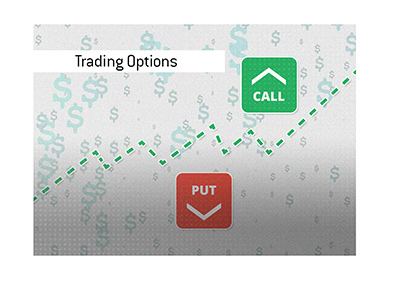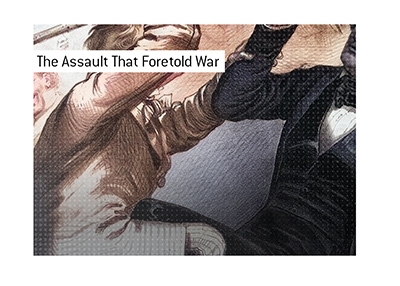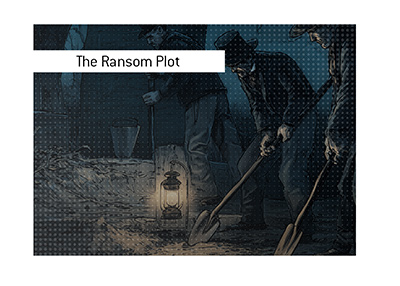Stock Market Options: Both Simple and Complicated
 The world of stock market options can be either quite simple or ridiculously complicated.
The world of stock market options can be either quite simple or ridiculously complicated. At its core, options boil down to just two things: calls and puts.
A call is an option to buy something at a certain price and on a certain date, while a put is an option to sell something at a certain price and on a certain date.
In order to illustrate how calls and puts work, let's imagine that the housing market in your neighborhood had options trading.
Scenario 1
Each house in your neighborhood is worth $250,000. You are bullish on the neighborhood, as there is a new transit system being installed in the area, and you believe that this will result in higher home prices.
There are 10 houses in the neighborhood, each worth $250,000. Now, if you were bullish, you could always just buy the ten houses for $2.5 million total, though that would be an enormous amount of capital that you would be tying up.
Instead, what would happen if you purchased an option to buy each of the 10 houses at any point over the next two years? That would mean that you could control the houses (as you have the option to buy them) without tying up so much money.
Let's say that you acquire the option to buy the 10 houses in the neighborhood for a total of $300,000. Here are the terms of the option:
1. You can buy the 10 houses at any time over the next two years for $250,000 each (total purchase price of $2.5 million).
2. This option will cost you a total of $300,000.
3. You can walk away from the contract at expiration, though you will lose the premium ($300,000).
You are speculating that the houses will rise in value by more than $30,000 ($300,000 in premium divided by 10) each over the next two years, while the owners believe that their houses will not rise by that much. The owners of the asset (the homeowners) will keep the $300,000 in premium.
Let's say that the housing market in the area booms and the houses double in value in just one year.
The contract that cost $300,000 would now be worth considerably more, as each house is now worth $500,000.
You agreed to have the option to buy the houses at $250,000 each, which means that the contract has intrinsic value of $2.5 million. Since you agreed to have the option to buy the houses at $250,000 and the houses are now worth $500,000 each, the intrinsic value is derived by subtracting the agreed upon purchase price from the current market value of the houses ($500,000 - $250,000).
In addition, there is still a year of time left on the options, which also has value. Stock market options also have something called Implied Volatility baked into their price as well, which represents the amount that the asset could potentially move during the lifetime of the contract. The higher the implied volatility, the higher the premium.
For instance - let's say that the city council is voting on a measure to approve a new football stadium in the area. If the measure is approved, home prices will soar over night.
Because of this implied volatility, you would likely want to charge much more for your contract, as it could potentially be worth even more if the measure is approved. If city council weren't voting on such a measure, the expected volatility would be much lower.
So, when valuing your contract, you have to take into account the following:
1) Intrinsic value, which in this case is $250,000 per home, or $2.5 million.
2) Time value. There is still a year left on the contract, and this time carries some value. The closer you get to the end of the contract, the quicker the time value evaporates (this is called theta decay).
3) Implied Volatility. Will the stadium measure be passed? This upcoming event adds value to the contract as well.
In the end, you decide that your contract to buy these 10 homes is now worth $3 million, including intrinsic value, time value and implied volatility.
In this case, you can see the advantages of options, as you were able to control $2.5 million worth of assets without ever actually owning them. Controlling these assets for two years only ended up costing you $300,000.
Scenario 2
Let's say that you OWN the same ten houses in the area.
Let's say that you are bearish on the same housing market, meaning that you think that home values will decline.
Why do you think this? You believe that a major steel plant in the area is about to shut down and that this will have a dramatically negative impact on housing prices in the area. You are not 100% sure that this will happen, though you want to minimize your risk regardless.
You decide to buy PUT OPTIONS on your ten houses. Here are the terms of the contracts:
1) You have the right to sell these 10 houses at $250,000 any time over the next two years.
2) You will pay $10,000 per house, for a total cost of $100,000.
The market currently values the houses at $250,000. You are buying protection, as your downside, if prices collapse, will be limited to the $100,000 in premium that you paid for the contracts.
A put contract gives you the right to SELL something at a certain price, while a call contract gives you the right to BUY something at a certain price.
Put contracts can be used to protect against losses (if you own an asset) or to speculate on something going down in value.
If you felt that the housing market in the area was going to drop, you could decide to buy put contracts without actually owning the asset. If you paid $10,000 per house contract and the housing market collapsed, you could make a small fortune, as your put contracts swould explode in value.
-
When it comes to the stock market, call options give you the option to buy 100 shares of a stock at a certain price on a certain date, while put options give you the option to sell 100 shares of a stock at a certain price on a certain date.
So, if you see something like this:
$4.50 - AAPL $225 May 27th call
This means that the right to buy 100 shares of AAPL at $225 on May 27th is currently trading for $4.50. Since this contract is for 100 shares of AAPL and not just one share, we multiply $4.50 by 100 to arrive at a total premium of $450. So, if you wanted to buy one of this contract, you would need to spend $450.
If you see the opposite:
$4.50 - AAPL $225 May 27th put
This means that the right to SELL 100 shares of AAPL at $225 is currently trading for $4.50, which translates into total premium of $450.
Filed under: General Knowledge



